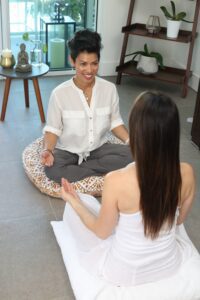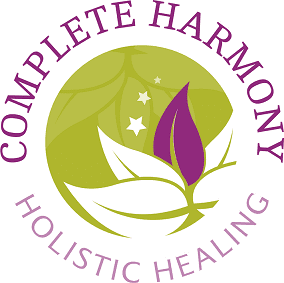Has one of these widely-held (but completely wrong) beliefs about meditation put you off?
Curious about the benefits of meditation but not sure it’s for you?
The truth is (and much research has been done around this) meditation has many mental, emotional, spiritual and physical benefits which can be easily accessed by anyone.
So, let me help you to look at meditation with fresh eyes and see if it’s for you. You don’t need any experience to start, just to have the desire to give it a go and to experience what it feels like for you.
The Cambridge dictionary definition of meditation is….
‘The act of giving your attention to only one thing, either as a
religious activity or as a way of becoming calm and relaxed’.
So why meditate?
Meditation is great for…
- stress and anxiety relief
- helping to focus your thoughts
- calming the mind and body
- helping to reduce physical discomfort and pain.
There are several different types of mediation. Moving meditations such as Tai Chi, walking and yoga. Creative meditations which include arts, crafts and painting. Silent meditation which is the most commonly known type of meditation. It’s worth trying a few different types to see which suits you best.
Seven common meditation myths
1. It has religious links
Although it has been practised by many religious orders for 1,000s of years, it has no religious connections.
2. It takes a long time to learn to do it right
There’s no wrong or right way to meditate. You can experience the benefits of meditation in as little as a few seconds. How long it takes you to learn how to meditate depends on your teacher, your learning style and your learning ability.

3. It can only be done by adults
Your age doesn’t determine if you can meditate or not. Meditation is now being practised in many state and private nurseries and schools with great success. Some nursing and care homes also include meditation as part of their weekly activities.
4. Silence is needed for it to be done properly
Although a quiet space is helpful and advisable, complete silence is not necessary for you to meditate.
5. You need to close your eyes
Meditation can be done with your eyes open or closed. If you feel more comfortable with your eyes open, just lower your gaze.
6. You need to be able to clear your mind
This meditation myth is a big one. As the average person has about 12,000 thoughts a day, it would be impossible to clear your mind of so many thoughts. Meditation is not about clearing your mind. It’s about quieting your mind so that the thoughts can come and go freely. So, having thoughts is OK. When you start meditating you will notice that you have a lot of thoughts. The key is not to fight them, argue with them, or get lost in them. Meditation happens in the spaces between your thoughts.
7. Sitting crossed legged is necessary
The position you sit in whilst meditating affects the flow of energy through your body. Although sitting crossed legged with your back straight isn’t necessary, it is one of the best positions to help energy flow freely whilst you meditate.
More helpful information
For silent meditations, being able to sit still is a useful skill but don’t let this put you off. Fidgeting when you first start is normal. Start with the simplest meditation (a breathing meditation) for just 2 minutes. Like any other new skill, it takes practice and once you’ve been practising it for a while you will be able to do it for longer. Anything from 10 minutes up to several hours or even days at a time. It can be done with or without music, try both and see what suits you.
Guided meditation
If you’re new to meditation and you would like to learn with others a meditation group may suit you. Here, the session is led by a meditation teacher who will guide and talk you through a meditation. It’s a more sociable way of meditating. Guided meditation can also be done on your own using an app or a CD as your guide. Crystals, candles, music, incense etc. are often used to enhance your meditation experience.
If I’ve whetted your appetite and you want to learn more about meditating, start by downloading my Connect to Calm meditation.
Find out about workshops here.
Take a look at my book, Self-care for Busy Women. It’s full of hints, tips, checklists and trackers and will show you how spending just a few minutes each day focusing on your mental, emotional and physical health can have a big influence on your mindset and well-being. You’ll also be able to create your own 28-day self-care plan that fits seamlessly into your busy lifestyle.
About Sharon
 Sharon lives with her partner, Geoff, in Warwickshire and they have two adult children. She worked for over 25 years in an office environment, gaining qualifications to degree level in finance, business and management. While there Sharon witnessed and experienced many stressful situations and suffered illnesses that were stress-related.
Sharon lives with her partner, Geoff, in Warwickshire and they have two adult children. She worked for over 25 years in an office environment, gaining qualifications to degree level in finance, business and management. While there Sharon witnessed and experienced many stressful situations and suffered illnesses that were stress-related.
Sharon was advised to make some changes to her lifestyle which included trying complementary therapies. After experiencing the benefits of complementary treatments, Sharon decided to retrain and share her knowledge and experiences to help others recognise and manage their own physical and emotional stress and anxiety levels.
She has been working as a complementary therapist for over 15 years now and loves helping people manage and reduce their stress levels to feel uplifted, focused, positive and empowered about their lives.




